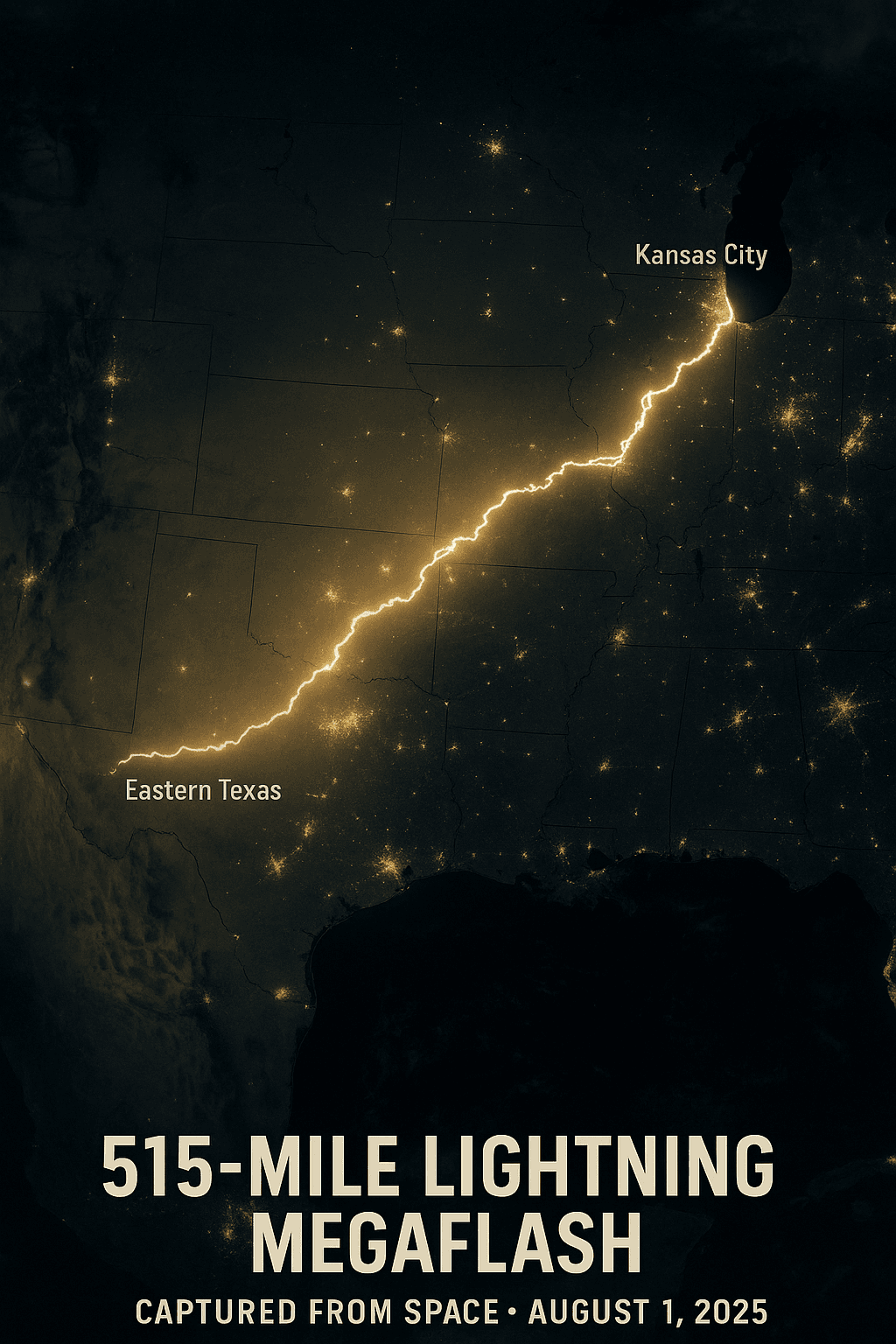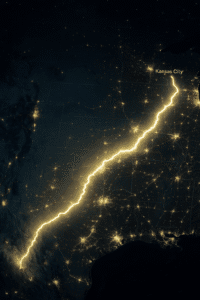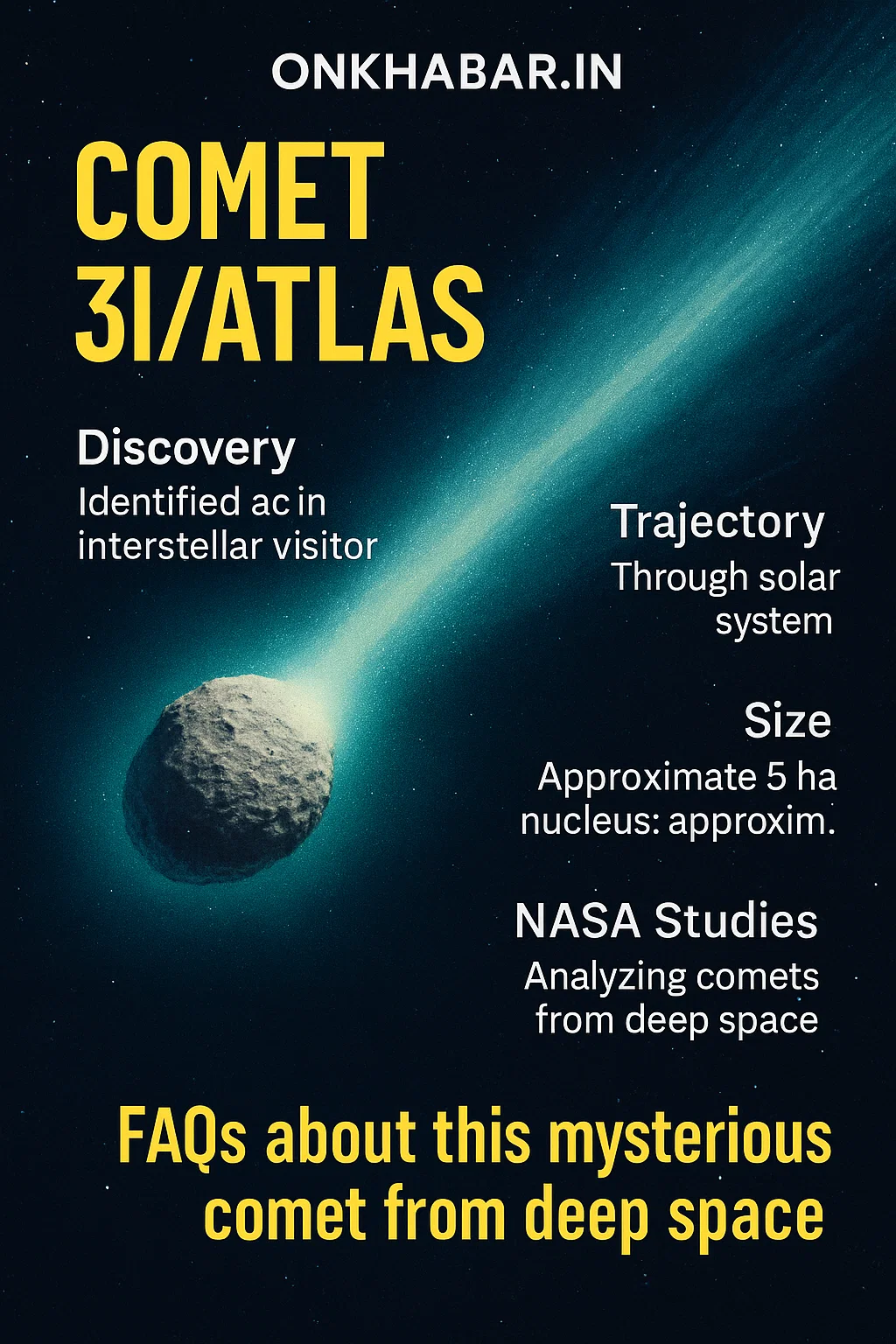
Forget the lightning bolts you know. Scientists have just certified a truly mind-bending record: a single lightning flash that stretched an incredible 515 miles (829 kilometers) across the sky! Captured from space, this “megaflash” lit up the Great Plains from eastern Texas nearly all the way to Kansas City back in October 2017 – a fact only uncovered thanks to cutting-edge satellite technology. Let’s dive into this electrifying discovery!

Shattering Records from the Heavens
This colossal discharge wasn’t just a little longer than previous records; it smashed them by a whopping 38 miles! It easily surpassed the prior record of 477 miles set in April 2020. Researchers from Arizona State University (ASU) and the Georgia Tech Research Institute, led by Professor Randy Cerveny (ASU) and Michael Peterson, re-examined data from the 2017 storm using instruments aboard satellites like NOAA’s GOES-16.
“We call it megaflash lightning, and we’re just now figuring out the mechanics of how and why it occurs,” explains Professor Cerveny, who also serves as the rapporteur of weather and climate extremes for the World Meteorological Organization (WMO).
The Satellite Revolution: Seeing the Big Picture
For decades, we relied on ground-based antenna networks to detect lightning. These systems are good but have limitations in tracking truly massive horizontal flashes over vast distances. The game-changer came with geostationary lightning mappers mounted on satellites like GOES-16 (launched in late 2016, operational 2017), and similar satellites from Europe and China.
How it Works: These satellites orbit 22,236 miles above Earth, staying fixed over one spot. Their advanced sensors continuously detect the optical pulses of lightning across entire continents.
The Power: “Adding continuous measurements from geostationary orbit was a major advance,” says Michael Peterson, lead author of the report in the Bulletin of the American Meteorological Society. “Our weather satellites carry very exacting lightning detection equipment that we can use to document to the millisecond when a lightning flash starts and how far it travels,” adds Cerveny. GOES-16 alone detects about one million lightning flashes per day!
What Exactly is a Megaflash?
Not all lightning is created equal:
Typical Bolt: Most lightning flashes travel less than 10 miles.
Megaflash Status: When a single lightning discharge travels horizontally over 60 miles (100 km), it earns the “megaflash” title.
Rarity: Less than 1% of thunderstorms produce megaflashes, according to Peterson’s analysis of satellite data.
The Birth of a Monster
Megaflashes don’t come from your average afternoon thunderstorm. They require specific conditions:
Long-Lived Storms: The parent thunderstorms brew for exceptionally long periods, typically 14 hours or more.
Massive Size: These storms sprawl over an enormous area, comparable in size to the state of New Jersey.
Horizontal Dominance: While they can produce dangerous ground strikes (an average megaflash sends down 5-7 branches), their defining feature is their incredible horizontal reach within the cloud system.
Why This Matters: Beyond the Record
Scientific Understanding: Documenting these extremes helps scientists unravel the complex physics governing the most powerful electrical discharges in our atmosphere. “It is likely that even greater extremes still exist,” says Cerveny, “and that we will be able to observe them as additional high-quality lightning measurements accumulate over time.”
Critical Safety Warning: This record highlights a crucial and often underestimated danger. Lightning can strike far from the core of its parent storm. “People don’t realize how far lightning can reach from its parent thunderstorm,” Cerveny emphasizes. That seemingly clear sky 10-15 miles away? It might not be safe.
The Stats: Lightning kills 20-30 people annually in the U.S. and injures hundreds more.
The Hidden Danger: Many injuries occur before the storm peaks overhead or after it seems to have passed.
The Rule: ALWAYS wait at least 30 minutes after the last thunderclap before resuming outdoor activities. “The storm that produces a lightning strike doesn’t have to be over the top of you,” Cerveny warns. This is especially vital advice knowing megaflashes can originate storms dozens or even hundreds of miles away.
The Future is Electric (and Well-Observed)
With advanced geostationary satellites now covering most global “megaflash hotspots” and data processing techniques continuously improving, scientists are poised to detect even more extreme events. This record-breaking 515-mile megaflash isn’t just a curiosity; it’s a testament to our growing ability to observe Earth’s most dramatic phenomena and a stark reminder of nature’s power and the importance of respecting its reach.
FAQ: Lightning Megaflashes
What is megaflash lightning?
Megaflash lightning refers to exceptionally long horizontal discharges within thunderstorms that travel more than 60 miles (100 kilometers). They are rare and associated with massive, long-lived storm systems.How was the 515-mile lightning flash measured?
It was detected and measured using highly sensitive lightning mappers aboard satellites in geostationary orbit, primarily NOAA’s GOES-16 satellite. These instruments continuously monitor lightning pulses across entire continents with high precision.Why wasn’t this record flash discovered until years later?
The flash occurred in October 2017. The sheer volume of data collected by satellites requires time and advanced processing techniques to analyze thoroughly. Scientists re-examining older data identified this extreme event.Is megaflash lightning more dangerous than regular lightning?
While incredibly powerful, the primary danger of megaflashes isn’t necessarily greater intensity at a single point (though they can produce multiple ground strikes). The biggest danger they highlight is lightning’s ability to strike very far from the main storm cloud. This underscores the importance of lightning safety rules.Where do megaflashes most commonly occur?
Based on satellite data, megaflash “hotspots” include the Great Plains of the USA (like where this record occurred), parts of South America (like the La Plata basin), and other regions prone to massive, long-lived mesoscale convective systems.What’s the key safety takeaway from this discovery?
Never assume you’re safe from lightning just because the storm seems distant or has passed. Lightning can travel horizontally for many miles from the storm core. Always seek shelter when thunder roars and wait at least 30 minutes after the last thunder before going back outside.








